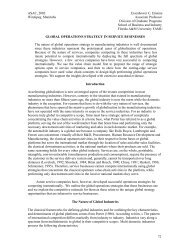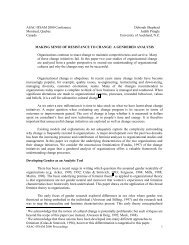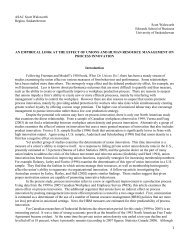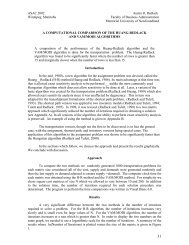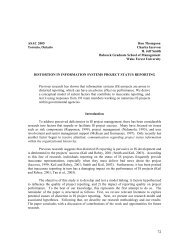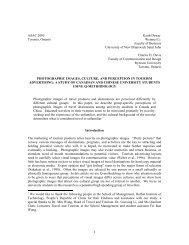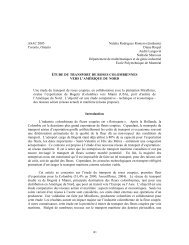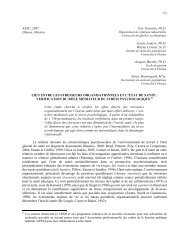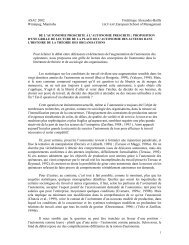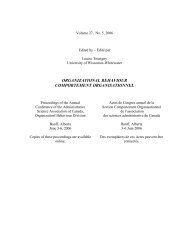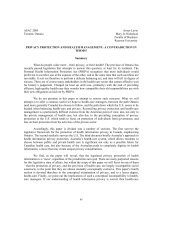Organizational Behaviour Comportement Organisationnel
Organizational Behaviour Comportement Organisationnel
Organizational Behaviour Comportement Organisationnel
You also want an ePaper? Increase the reach of your titles
YUMPU automatically turns print PDFs into web optimized ePapers that Google loves.
work role demands. In this survey, we used the thirteen-item measure from Rizzo, Hause, &Lirtzman (1970).We also included a short-form version of a social desirability scale as a control measurefor potential bias (Crowne & Marlowe 1960).DataThe HR department of a provincial health care organization provided a vetted list of 251names with associated email addresses for employees of an organizational branch. We sentindividualized participation invitations to all email addresses on the list. Participation wasvoluntary and required the completion an 84-item online survey. Participants could also request aprinted version of the survey. Twenty-six of the addresses provided produced autoresponsesindicating that the recipient was on vacation or that the email address was no longer valid. 70participants completed the online survey and 2 completed a printed survey resulting in a 32%response rate of the valid email addresses of available employees (72/225). Participation wasverified with a reply email thanking them for their participation and a request to inform us if theemail was received in error. No recipients noted such an error.The average age of the respondents was 41 years, with an average of 7 years of experience atthe branch and 13 years in their current career. 64 (89%) women and 8 (11%) men completed thesurvey. The entire participant pool was 78% female and 22% male. Since the data was notcollected using random probability methods, caution is required for any generalizations. Theremay be unknown self-selection bias problem within the data since we do not know why somepeople chose to participate and some did not. We did examine the data for indications ofpotential problems and we did include methods within the survey as checks for possible biases.Using various statistical techniques, we examined all of the questions and measures forindications of non-normality or biases and did not find any noticeable problems. We consistentlyfound normal distributions among the data; the reliability tests of the established measuresproduced results consistent with prior researchResultsIn Table 2 we present the correlations for the focal measure and the measures used for aninitial test of construct validity. In Table 3 we provide the results of an OLS regression analysiswith the toxin handler behaviour measure as the dependent variable.The results in Table 3 provide support for the construct validity of our self-report toxinhandler behaviour measure. As expected, we find significant associations between toxin handlerbehaviour and empathic concern, perspective taking, and other-felt responsibility. The strongconnection to empathy is encouraging and provides significant support for the convergent validityof our measure. It is also a concern as these two measures may be measuring the same underlyinglatent construct. Conceptually, however, our toxin handler scale examines beliefs about actionswhile the empathic concern scale examines beliefs about feelings. We believe this is a significantconceptual difference.Table 2: Descriptive Statistics; Correlation Coefficients; and Reliability ScoresN mean s.d. EC OFR SFR PT RC SD TH1 Empathic Concern 72 38.3 5.3 0.77Other-Felt2 Responsibility 72 15.5 5.1 0.27 0.81Self-Felt3 Responsibility 72 24.2 2.6 0.52 0.14 0.52100



